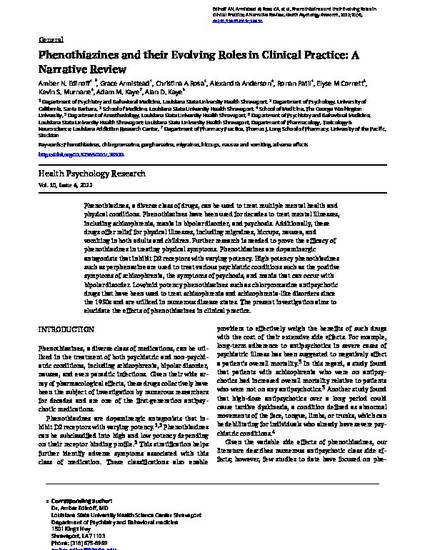
Phenothiazines, a diverse class of drugs, can be used to treat multiple mental health and physical conditions. Phenothiazines have been used for decades to treat mental illnesses, including schizophrenia, mania in bipolar disorder, and psychosis. Additionally, these drugs offer relief for physical illnesses, including migraines, hiccups, nausea, and vomiting in both adults and children. Further research is needed to prove the efficacy of phenothiazines in treating physical symptoms. Phenothiazines are dopaminergic antagonists that inhibit D2 receptors with varying potency. High potency phenothiazines such as perphenazine are used to treat various psychiatric conditions such as the positive symptoms of schizophrenia, the symptoms of psychosis, and mania that can occur with bipolar disorder. Low/mid potency phenothiazines such as chlorpromazine antipsychotic drugs that have been used to treat schizophrenia and schizophrenia-like disorders since the 1950s and are utilized in numerous disease states. The present investigation aims to elucidate the effects of phenothiazines in clinical practice.
Available at: http://works.bepress.com/adam-kaye/203/
